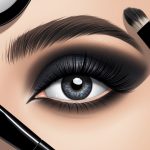How to Repair Damaged Hair: Expert Tips for Stronger, Shinier Locks
Damaged hair can leave anyone frustrated with dry, brittle strands that lack shine and strength.
Everyday habits like excessive heat styling, chemical treatments, or environmental stress can all compromise hair health, making split ends and breakage common issues.
Restoring strong, shiny locks is possible with targeted care, expert hair repair tips, and consistent use of products designed for damaged hair.
For anyone struggling with lackluster or weakened hair, there are proven ways to repair damaged hair and prevent more harm.
Gentle cleansing, deep conditioning treatments, and weekly hair masques can help inject much-needed moisture and revitalize strands.
Expert advice highlights that prioritizing moisture and choosing gentle, nourishing products plays a big role in hair repair—resulting in improved hair health over time, as seen in this guide to damaged hair treatment.
Readers looking to transform their hair with effective solutions can benefit from reliable expert tips for stronger, shinier locks.
Understanding what causes damage, providing the right nutrients, and following a consistent repair routine are the foundation for healthier hair.
Understanding Damaged Hair
Damaged hair shows visible and physical changes that affect its appearance and strength.
Recognizing the early signs, knowing the main causes, and understanding what happens inside each strand can help prevent and manage hair damage effectively.
Signs of Damaged Hair
Signs of damaged hair are often easy to spot.
Split ends, excessive frizz, and dullness are common markers.
Strands may feel rough or dry to the touch and can break easily.
Tangles and knots become more frequent due to the hair fiber’s uneven surface.
Itching or sensitive scalp can accompany these changes.
Lack of natural shine is another indicator, as damaged hair cuticle fails to reflect light.
When styling, heat tools may fail to smooth the hair, and the hair may not hold styles well.
In severe cases, the hair may thin out or exhibit noticeable shedding.
Loss of elasticity is also a sign—hair snaps rather than stretches.
All these changes signal the need for targeted hair repair strategies.
Causes of Hair Damage
Common causes of hair damage include excessive heat styling, frequent chemical treatments, and harsh environmental conditions.
Flat irons, curling wands, and blow dryers used often at high temperatures strip away moisture and weaken the hair cuticle.
Chemical processes, like bleaching, coloring, or perming, disrupt the protein bonds and natural oils, leading to dry, fragile strands.
Sun exposure, pollution, and hard water can further compromise hair health.
Tight hairstyles or repeated brushing cause mechanical wear, resulting in split ends or breakage.
The combination of these factors leaves the hair fiber vulnerable to further damage.
Even using harsh shampoos with sulfates or washing hair too frequently can strip away protective oils.
It’s important to identify and minimize these causes to reduce ongoing stress to the hair.
How Hair Structure Changes
Healthy hair consists of an outer protective cuticle, a cortex rich in protein, and sometimes a central medulla.
When hair sustains damage, the cuticle—the hair’s outer layer—becomes raised, chipped, or broken.
This leaves the cortex exposed and more prone to moisture loss.
Protein bonds inside the cortex may be altered or broken by chemical or physical stress.
This weakens the hair fiber’s overall integrity, making it more likely to split or snap.
Porosity increases, so hair absorbs and loses water more easily, affecting softness and resilience.
Over time, repeated damage makes hair appear increasingly dull and rough.
Loss of structural proteins and cuticle disruption leaves hair looking lifeless, difficult to manage, and requiring special care and restoration.
Recognizing these structural changes is a key step in choosing the correct repair strategies.
Daily Hair Care Routine for Healthier Hair
A healthy hair care routine targets both strength and shine while reducing damage over time.
The right approach focuses on using suitable cleansing products, careful conditioning methods, and maintaining regular trims for better hair health.
Choosing Nourishing Shampoo
Selecting the right shampoo is essential for preventing further damage.
A nourishing shampoo formulated for an individual’s hair type—whether oily, dry, or normal—helps cleanse without stripping away natural oils.
Shampoos labeled as “restore shampoo” typically contain hydrating ingredients that support recovery for over-processed or weakened strands.
A gentle routine involves washing only as often as needed, since over-washing can dry out the scalp and hair.
Opt for sulfate-free formulas, especially for color-treated or fragile hair.
According to dermatology experts, using shampoo that aligns with unique hair needs reduces breakage and split ends.
More details about choosing appropriate hair products can be found at this healthier hair guide.
Proper Conditioning Techniques
Using the right conditioner is vital for maintaining soft, manageable hair.
Apply conditioner to damp hair, concentrating on the mid-lengths and ends, which are most prone to dryness.
Let it sit for at least 2-3 minutes before rinsing to maximize moisture absorption.
Incorporate a deep conditioner or hair mask into the weekly routine, especially for dry or damaged hair.
These treatments nourish with proteins and natural oils, helping repair broken bonds caused by heat styling, coloring, or sun exposure.
Avoid applying conditioner directly to the scalp to prevent buildup and greasiness.
Consistent conditioning, combined with thoughtful product selection, leads to shinier, healthier strands.
For a complete guide to conditioning, visit these hair care routine tips.
Benefits of Frequent Trims
Regular trims play a crucial role in keeping hair looking strong and vibrant.
Cutting hair every 6–8 weeks removes split ends before they travel up the hair shaft, preventing further breakage.
Frequent trims do not make hair grow faster, but they certainly help maintain length by reducing the need for major haircuts later.
Stylists recommend using sharp shears rather than blunt scissors at home, as ragged cuts can worsen split ends.
Smoother, blunter cuts help reduce frizz and give hair a fuller, more polished appearance.
Combined with a nourishing hair care routine, routine trims maximize the benefits of other healthy hair habits for long-term shine and strength.



